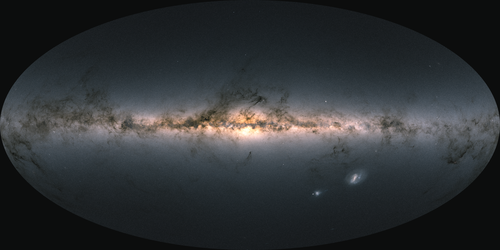The Gaia Mission from the European Space Agency (ESA) is on its way to help map one of the most significant galaxies in space, and it is within the Milky Way's region. The mission would focus on providing new information and looking at the region, looking more at its edges and the surrounding area, apart from the previous look at the galaxy.
ESA's Gaia Mission to Help Map the Milky Way

The ESA's Gaia is a spacecraft that looks at billions of stars, and it brings more of the many discoveries in deep space, and it will help in mapping more of the Milky Way's region. The new mission will focus on looking more into the unseen parts of the galaxy, and it will help us discover more of our galaxy to more than we know it.
According to the previous press release of the Gaia, there are older parts of the Milky Way that were unknown to the public and it brings much information already to what it knows. Now, it is setting out there for more discoveries of the galaxy and it aims to create a new map that will help in looking at its edges and other unknown regions.
Milky Way's Edges Will See a Clearer View
According to Space.com, ESA's Gaia will release its new data come June 13. and it will already hold the new information and data that it brought from its recent ventures. The main focus of this venture is to bring a new map that will explain more of the galaxy as we know it, focusing on the many unknown areas and other space objects present.
Gaia Mission and the ESA
The Gaia mission focuses on deep space, bringing the much information that it provides to the world and it is the main goal of the spacecraft for its missions. On a recent occasion, ESA and the Gaia discovered new asteroids in deep space as it was looking at stars in vast space, and it is a testament to its power and capabilities as a spacecraft.
Gaia's spacecraft apparatus is also powerful as its cameras focus on far subjects and bring its images and look at different locations in the galaxy. At one time, it saw the NASA James Webb Space Telescope and captured the spacecraft from 620,000 miles away, and it gives a massive take on how powerful the cameras it has aboard.
Now, it is focusing more on what the planet needs to understand, and it is more of the galaxy it is a part of, especially its massive areas that still go unknown to everyone on the planet. The Gaia mission is one of ESA's largest ventures and it focuses on bringing many deep-space ventures, and it provides the world with information and visuals regarding the deep space.
This article is owned by TechTimes
Written by Isaiah Richard
ⓒ 2025 TECHTIMES.com All rights reserved. Do not reproduce without permission.




